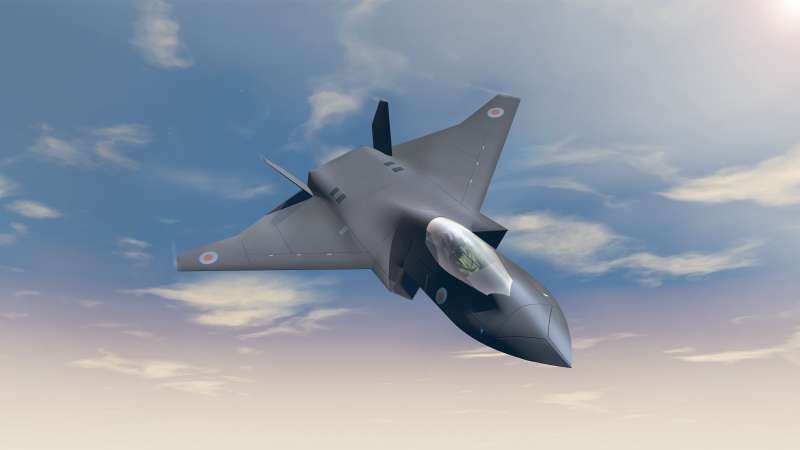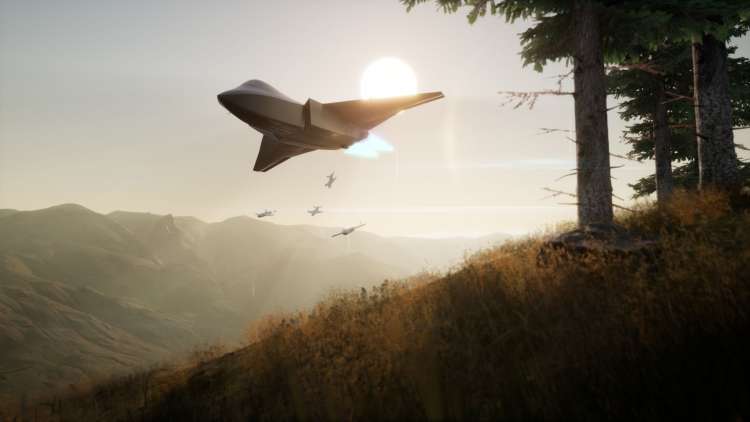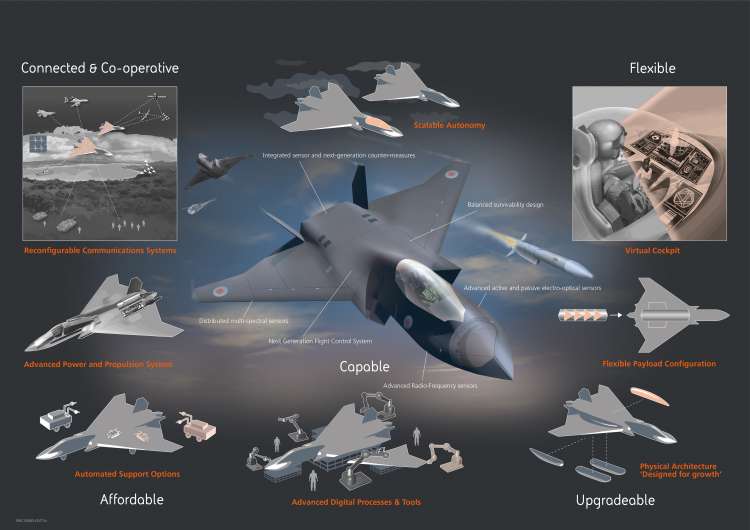Project Tempest 6th Generation combat aircraft assessed by former British technical liaison

Jim Smith had significant technical roles in the development of the UK’s leading military aviation programmes. From ASRAAM and Nimrod, to the JSF and Eurofighter Typhoon. We asked his opinion on what we can learn from looking at Britain’s next potential fighter, Project Tempest.
Hush-Kit has asked me to provide some quick analysis of the BAE Systems Tempest 6th Gen combat aircraft concept announced on 16 July. I’m delighted to have the opportunity to comment, although much that follows will be speculative, and perhaps based on a view of what this concept might become, rather than a detailed analysis of what looks like an early placeholder which will be refined through further study.
Because I am currently travelling (and indeed writing this at 5:30 local in the airline lounge in Dubai) I have had the opportunity also to read Justin Bronk’s comments, which strike me as very sound. What can I add?
Well my first question, which will perhaps come as no surprise, is – what is Tempest intended to do? From a configuration perspective, this looks to me to be deliberately flexible at this point. The graphics show the aircraft firing a Meteor-like missile – no surprise there, given MBDA’s stated involvement, and the excellence of the weapon – and hence suggesting a BVR combat role. From the size of the aircraft, (which is driven by payload-range) this looks to be targeted at the air superiority rather than air defence role.

My earlier piece discussing BVR combat aircraft draws a distinction between the air defence role as one performed at or near the boundary between own and threat airspace, and air superiority, which depends on an ability to penetrate and fight in defended threat airspace. This becomes a driver for longer-range, and hence bigger aircraft; signature management and comprehensive EW for survivability; and powerful and sophisticated sensors aiming at a shoot-before-detected capability.
Tempest looks to have aspirations in all these areas, with space provided for internal carriage of weapon, and by implication, stores, sensors and fuel.
What should Tempest be? In my view there is the opportunity here to build a worthy successor to Typhoon and Tornado. This will only be realised if the MoD resist the urge to squeeze every ounce of weight out of the aircraft by attempting to pare cost by reducing the aircraft BME (Basic Mass Empty). Ideally Tempest should be designed to have managed signature, with internal weapons carriage, and sufficient range to conduct penetrating Offensive Counter Air (OCA) ops, while still retaining enough internal volume to carry air to surface stand-off weapons. For the BVR and strike roles, a reasonable level of agility would be required, but thrust-to-weight and energy manoeuvre capability are likely to be less than an air-to-air configured Typhoon.
SAVE THIS SITE! If you have enjoyed this please do consider donating to keep us going.
Looking at the upgradeable part of the slide, it appears external conformal tanks (above the wing ?) and conformal external sensor or weapons packs are a possibility – this approach could yield a 6th gen F-15 like capability, with the clean aircraft having somewhat more agility compared to the conformal ccarriage configurations providing both range and payload options (like the F-15C compared to the F-15E, but stealthier and probably with a bit less agility), which might even include a dedicated EW capability (like a stealthy F-18G, at least until the EW kit fires up).
On basic aircraft configuration, this looks close to the sort of sweep, aspect ratio and planform I would expect to come out of a design optimisation process for an aircraft with decent mission performance (good payload range), managed signature, and good enough manoeuvre capability (point performance) for a BVR fighter. It does not, however, look particularly like a dog-fighting aircraft, and nor need it be.
What are the points to worry about?
I agree with Jason Bronk that optionally manned is the worst of both worlds. But is there a scope for an unmanned wingman concept, where weight is saved by removing all the man-supporting elements? I’m still not sure this would be an optimal solution, but significant weight could be saved, and coupled with an FCS adapted to exploit the structural strength to the max, i.e. up to the aerodynamic and structural capability of the aircraft, rather than the 9g human limit, might have some advantages.
I cast some dark looks at the intakes, which have no boundary layer diverter, but also no ‘diverterless’ intake bump, such as is used by Lockheed and others. Managing the fuselage boundary layer is essential to get good engine and intake performance, but this is also a risk area for signatures.
Otherwise, there may be difficulties incorporating the conformal tanks/stores carriers in a stealthy design, and some aspects of the rear end design look a bit untidy at present.
My main message would be to hope BAE and the MoD keep this as a flexible, truly multi-capable aircraft, and not squeeze the life out of it in a mistaken attempt to minimise cost. If they do, any savings will come at the expense of future capability.


One comment